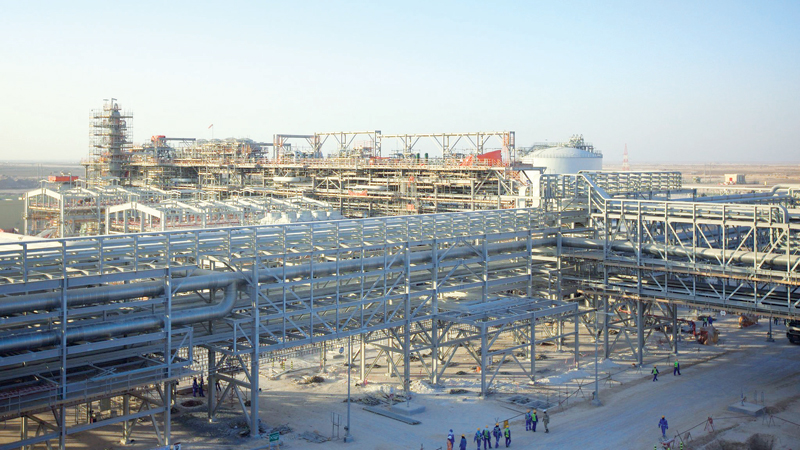

The nominal Gross Domestic Product (GDP) of the Sultanate continues to expand at a “robust pace, having burgeoned by 12 per cent during 2018 as against 7.3 per cent in the previous year, according to the Central Bank of Oman (CBO).
The petroleum and non-petroleum sectors grew in nominal terms by 37.1 per cent and 2.9 per cent, respectively, during this period. The contribution of hydrocarbon sector to nominal GDP jumped to 35.5 per cent in 2018 from 29.0 per cent during 2017 mainly due to a surge in oil prices. On the other hand, the share of non-hydrocarbon sector declined to 68.4 per cent from 74.4 per cent during this period, the apex bank stated in its newly released Banking & Monetary Review for the month of May 2019.
“The government and other stakeholders are consistently making efforts to promote diversification away from the hydrocarbon sector to reduce dependence on oil sector and ensure sustainable development over medium to long run,” the CBO report noted.
Inflationary conditions remained benign and the average retail inflation stood at 0.3 per cent during January-March 2019 as compared to 0.6 per cent during the same period of last year, the report said.
CREDIT GROWTH
Giving an analysis of the combined balance sheet of conventional banks and Islamic banking entities (other depository corporations), the Central Bank noted that total outstanding credit extended by other depository corporations (ODCs) increased year-on-year (YoY) by 6.7 per cent to RO 25.7 billion as at the end of May 2019.
“Credit to the private sector at RO 22.6 billion witnessed a growth of 4.8 per cent as at the end of May 2019. Of the total credit to the private sector, the share of non-financial corporate sector stood at 45.6 per cent, the household sector (mainly under personal loans) at 45.1 per cent, while that of financial corporations and other sectors stood at 5.8 per cent and 3.5 per cent, respectively,” the report said.
Total deposits held with ODC’s increased by 2.1 per cent to RO 22.8 billion, with private sector deposits growing by 3.5 per cent to RO 14.8 billion as at the end of May 2019. Sector-wise, the contribution of households in total private sector deposits was 50.2 per cent, followed by non-financial corporations at 28.4 per cent, financial corporations at 18.9 per cent, and the other sectors at 2.5 per cent.
A review of the activities of conventional banks indicates an annual growth in total outstanding credit disbursement of 5.5 per cent as at the end of May 2019, according to the CBO. Credit to the private sector grew by 2.7 per cent to RO 19 billion. Conventional banks’ overall investments in securities increased by 8.5 per cent to RO 3.4 billion.
Investment in Government Treasury Bills stood at RO 280.6 million at the end of May 2019. Aggregate deposits held with conventional banks increased by 1.3 per cent to RO 19.4 billion in May 2019 from RO 19.2 billion a year ago. Government deposits with conventional banks increased by 1.7 per cent to RO 5.3 billion, while deposits of public enterprises increased by 9.8 per cent to RO 1 billion during the same period. Private sector deposits, which accounted for 66 per cent of total deposits with conventional banks, increased marginally by 1.7 per cent to RO 12.8 billion. The core capital and reserves of conventional banks as at the end of May 2019 stood at RO 4.9 billion.
ISLAMIC BANKING
Islamic banking entities provided financing to the extent of RO 3.7 billion as at the end of May 2019 as compared to RO 3.3 billion a year ago. Total deposits held with Islamic banks and windows also increased to RO 3.4 billion in May 2019 from RO 3.2 billion a year ago. The total assets of Islamic banks and Windows combined amounted to RO 4.6 billion as at the end of May 2019, and constituted about 13.4 per cent of the banking system assets.
With regard to monetary aggregates as at the end of May 2019, the narrow money stock (M1) decreased YoY by 1.5 per cent to RO 5.2 billion, while quasi-money (Rial Omani saving and time deposits, certificates of deposit issued by banks, margin deposits and foreign currency denominated deposits) witnessed a growth of 7.5 per cent during this period. Broad money supply M2 (M1 plus quasi-money) stood at RO 17.3 billion as at the end of May 2019 and witnessed a growth of 4.7 per cent over that in the corresponding period of last year. “The domestic interest rates of conventional banks continue to follow the trends in the US due to the currency peg arrangement. However, Central Bank of Oman ensured appropriate liquidity in the banking system to support economic activities in the Sultanate. The weighted average interest rate on RO deposits increased to 1.932 per cent in May 2019 from 1.699 per cent a year ago, while the weighted average RO lending rate increased to 5.388 per cent from 5.228 per cent during the same period,” the Central Bank said.
The overnight Rial Omani domestic inter-bank lending rate stood at 2.668 per cent in May 2019, much higher as compared to 1.831 per cent a year ago. The average Repo rate for liquidity injection by the CBO stood at 2.953 per cent per annum during the month of May 2019, it added.
Oman Observer is now on the WhatsApp channel. Click here



